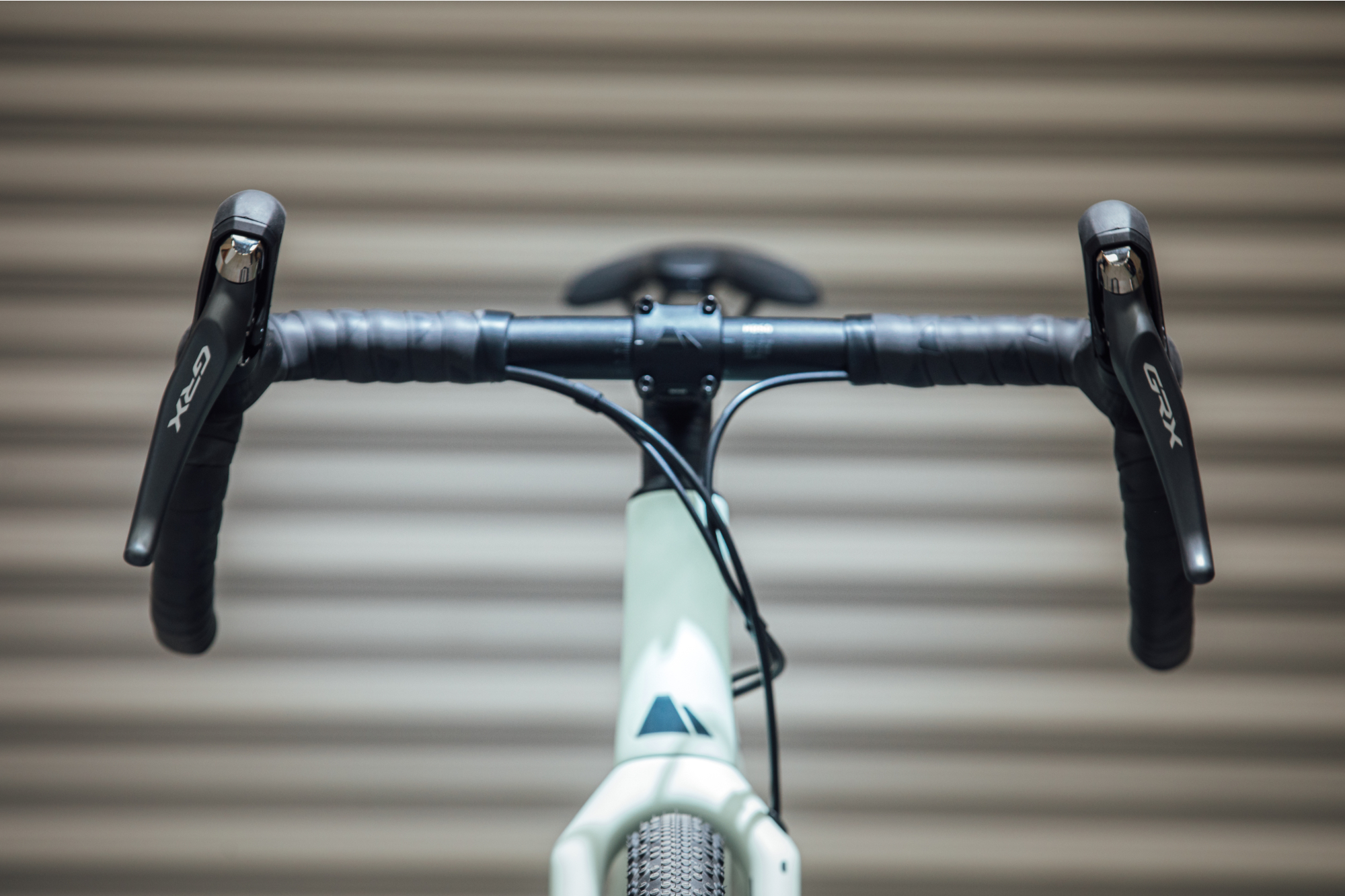The men's Gravel World Championships was won on a road bike, here’s how to convert yours into a gravel bike
Looking to coax out a little more off-road capability? Here's how to get the most from your road bike


With the dust having settled at the inaugural UCI Gravel World Championships, aside from the superhuman efforts, perhaps the next most notable thing was the bikes that were ridden. Or, more specifically, the fact that Canyon’s lightweight climbing bike – the Ultimate CFR – was ridden to victory by Gianni Vermeersch.
We don’t see ‘cross bikes winning time trials nor BMXs cinching the cross-country mountain biking – nevertheless, it was also the case that in the Women’s Gravel World Championships on Saturday that one of the best road bikes claimed a step of the podium: second place by Sina Frei on a Specialized Roubaix.
All of which raises the question: what exactly do you need to do to convert your road bike into one of the best gravel bikes? The World Championships has shown that this needn't leave you at a disadvantage – you could well be faster…
At least, depending on your routes. The 140km women’s course was very flat, packing in only 660m of elevation gain – at 194km and 800m, the men’s was proportionally flatter still. Plus, both routes were ridden over mostly hard-packed surfaces, where narrower tyres are at less of a disadvantage than loose and rocky trails.
Still, pretty much all of the same points apply when it comes to making your gravel bike more capable, although the pros’ setups were rather more extreme than what we’d recommend to most riders – but without further ado, let’s jump into how to convert your road bike into a gravel bike.
How to convert a road bike to a gravel bike

Wider tyres
It’s a bit of an obvious one, but it still shouldn't go without saying that squeezing some wider tyres into your road bike will help make it more capable for riding off-road.
Since the shift to disc brakes, road bikes are coming with ever more clearance. Some models such as the Giant Defy, Trek Domane and Canyon Endurace are actually rated for tyres up to 35mm – sufficient for many of the best gravel bike tyres and enough to see you hitting some relatively rough trails.
The latest race content, interviews, features, reviews and expert buying guides, direct to your inbox!
Other bikes, such as older models or those with nominally tighter clearances might be more generous than they first appear. The recommended clearance for many bikes is 3mm between the tyre and the frame – depending on your tyre and rim combination, you might be able to fit in a nominally wider tyre than the printed width suggests.

Equally, many forks are more generous in their clearances than the chainstays, but the bike’s clearances are still given the smallest measurement. In these cases, fitting a wider front tyre would still greatly increase the comfort - in the same way that hardtail mountain bikes have a suspension fork but a rigid rear.
Do be sure to check whether your intended upgrades stand to invalidate your warranty first, though.
Interestingly, Vermeersch’s Canyon Ultimate CFR had a less generous fork than rear triangle, resulting in a 33mm Vittoria Terreno Dry being spec’d on the front and a 35mm model spec’d on the rear.
Lower gearing

With the increased rolling resistance that comes from riding off-road, naturally your speed will decrease compared to what you’d be used to on tarmac. This means that you’ll rarely be using your largest gears as well as likely finding yourself with insufficient low gears, as gravel climbs can be much steeper than road ones, too.
Although the UCI Gravel Champs was on a largely flat course, many riders coming over from the road still chose to run smaller chainrings because of that increase in rolling resistance – although the choice of 52/36t chainset is what most amateur riders would only use on the road.
For us mere mortals, a compact chainset of 50/34t and a cassette of 11-34t is about the less generous gravel gearing that you could get away with. And one that requires the fewest additional upgrades: in many cases - although not all - your road derailleurs should be able to handle that gearing.
Really, though, most people would be best served by swapping in a 46/30t crankset – although depending on your frame and current front derailleur model, you might need to upgrade your front derailleur as well as investing in a new crankset.
Two-bolt cleats

Swapping from a pedal system that uses a three-bolt cleat to a two-bolt cleat offers a huge range of benefits for gravel riding. First, the smaller two-bolt cleats of the best gravel bike pedals are much less prone to getting gummed up with mud, making them much easier to clip in and out of if you’ve gotten off the bike off-road. The fact that most designs are double sided also makes them much easier to clip into in general.
Secondly, being made from metal and (generally) being recessed into the sole of your shoe, they are subject to much less wear, making them more durable and easier to walk around in.
There are some downsides to two-bolt cleat systems, the most prominent being the reduced foot support from their smaller size. But also the fact that you don’t get the same range of float adjustment for finetuning your setup.
Again, the UCI Gravel Champs proved another exception. Many riders coming from a road background opting to stick with the cleat system they’ve spent most time training with – that being a typically roadie three-bolt setup. Partly this is also down to the fact that the course wasn’t very technical – you never see a three-bolt cleat in a ‘cross race, for instance.
And also partly this is down to the Gravel Champs being first and foremost a race, and not an exploratory ride that might involve a reasonable degree of walking about. The racers aren’t expecting to put in many steps off the bike at all – which is quite different to the gravel experience non-racers partake in.
Comfort aids

Given that on a converted road bike you will likely have tyres which are a little narrower than typically for gravel bikes, it can be a good idea to swap in a few additional gravel comfort upgrades to help sound out some of the impacts.
Suspension stems can save your hands and wrists from those high frequency impacts, while a suspension seatpost can make it easier to put out the power more smoothly and consistently, compared to being jolted around.
Again, this is another road to gravel conversion tip that wasn’t universally applied during the Gravel Champs. For Vermeersch he at least has the excuse that the latest Canyon Ultimate is no longer compatible with round 27.2m seatposts, meaning no option for any further dampening there.
On the other hand, it is notable that the Specalized Roubaix road bike ridden to second place by Sina Frei in the women’s category has both a suspension stem and a highly bump absorbing seatpost – not really a coincidence at all.
Wider bars

Wider handlebars help provide a bit more handling confidence and control by putting you in a more stable position, and usually make for the best handlebars for gravel bikes. Over the years cross country mountain bike handlebars have gotten ever wider for just this reason.
A secondary benefit enjoyed by gravellers in particular is that it allows you to carry a larger handlebar bag too.
We didn’t see anyone rocking some supersized bars at the Gravel Champs. Narrower bars are more aerodynamic and given the speed that the top gravel racers ride at, this still has a large role to play.
Still, we also didn’t see anyone rocking the super tiny bars sometimes sported by breakaway specialists. The balance of control to aerodynamics is still factored in by the top riders, but just like the gearing, their ‘balance’ would be just too extreme for most of us.

I’ve been hooked on bikes ever since the age of 12 and my first lap of the Hillingdon Cycle Circuit in the bright yellow kit of the Hillingdon Slipstreamers. For a time, my cycling life centred around racing road and track.
But that’s since broadened to include multiday two-wheeled, one-sleeping-bag adventures over whatever terrain I happen to meet - with a two-week bikepacking trip from Budapest into the mountains of Slovakia being just the latest.
I still enjoy lining up on a start line, though, racing the British Gravel Championships and finding myself on the podium at the enduro-style gravel event, Gritfest in 2022.
Height: 177cm
Weight: 60–63kg